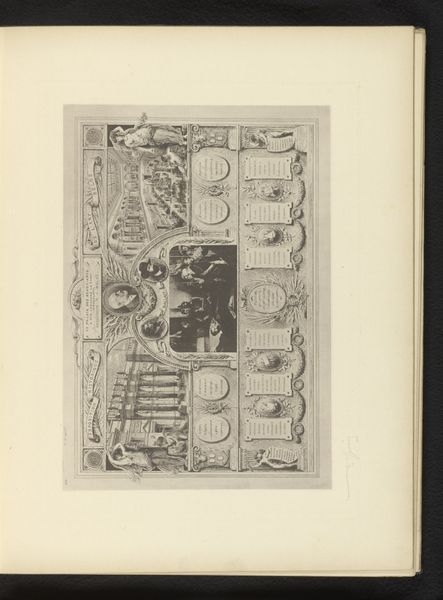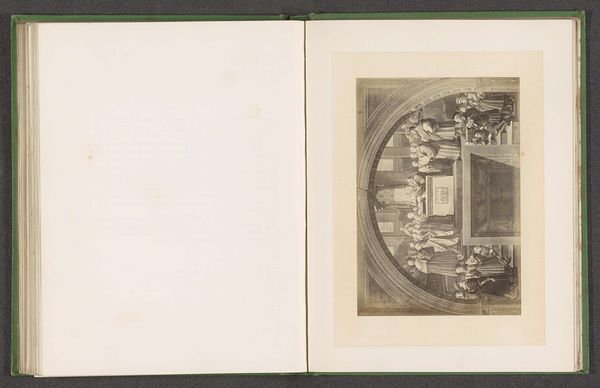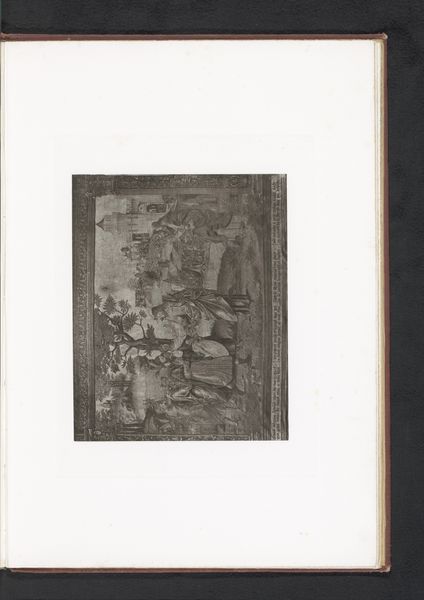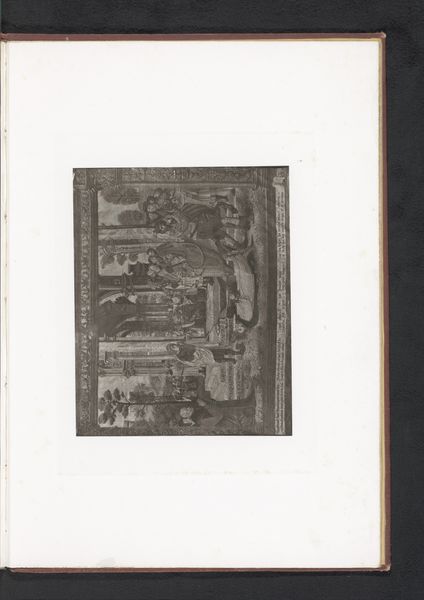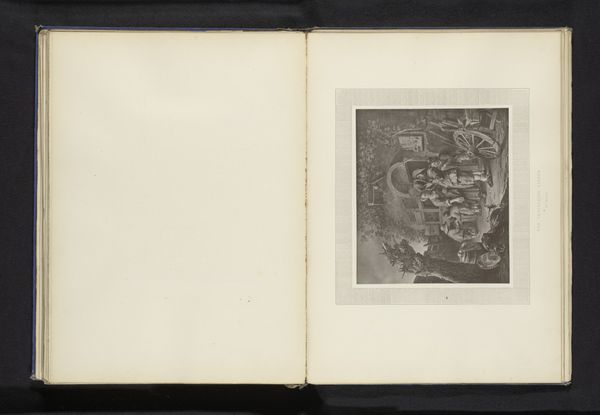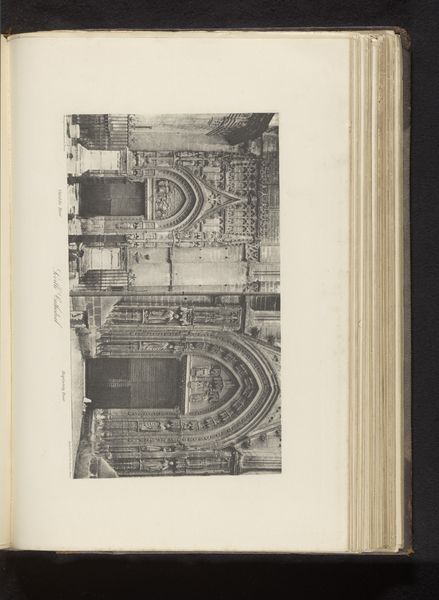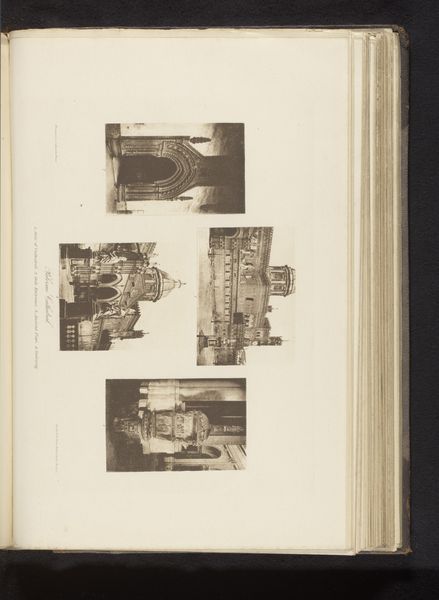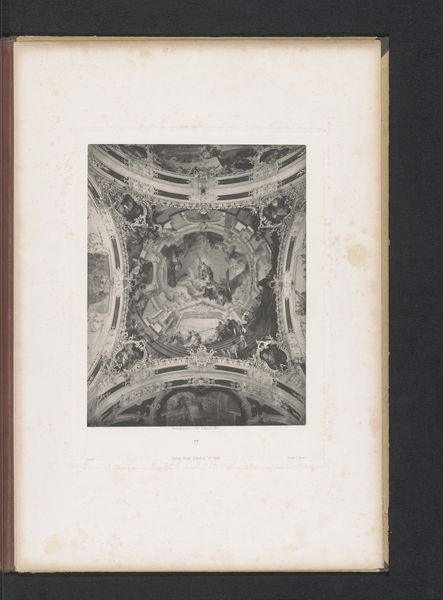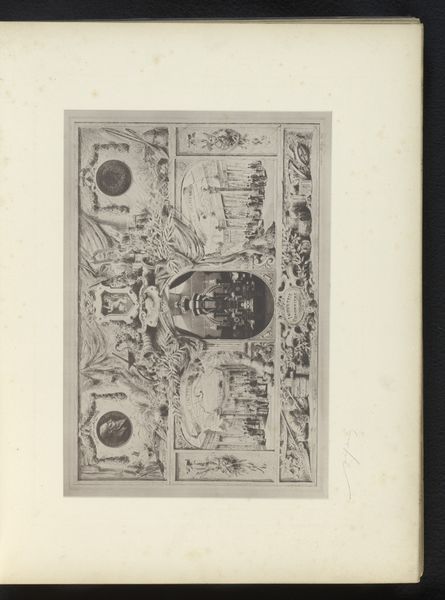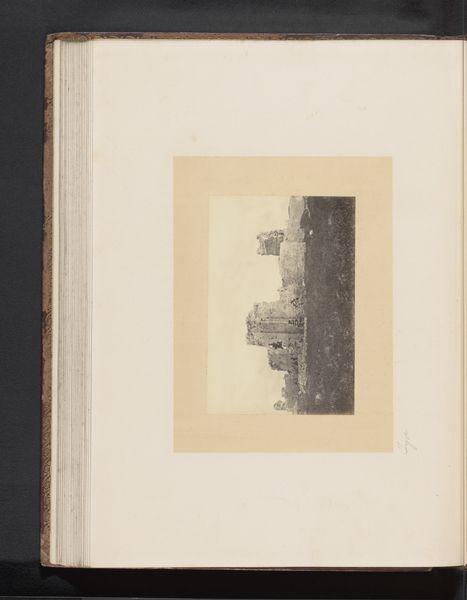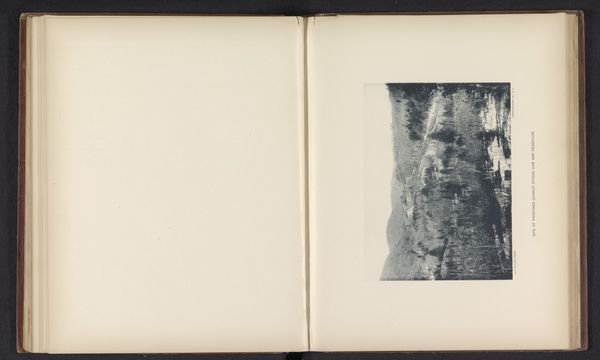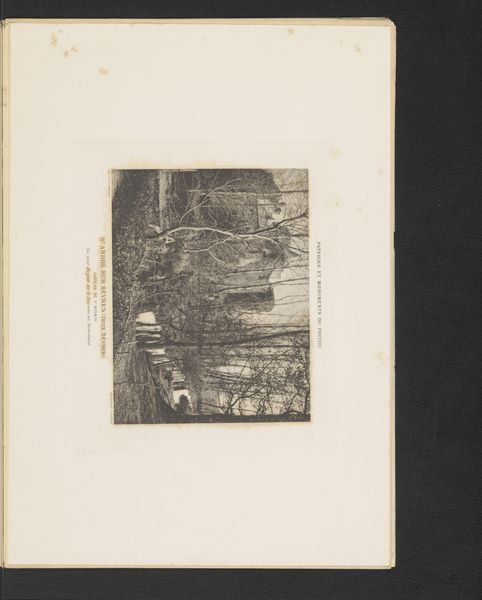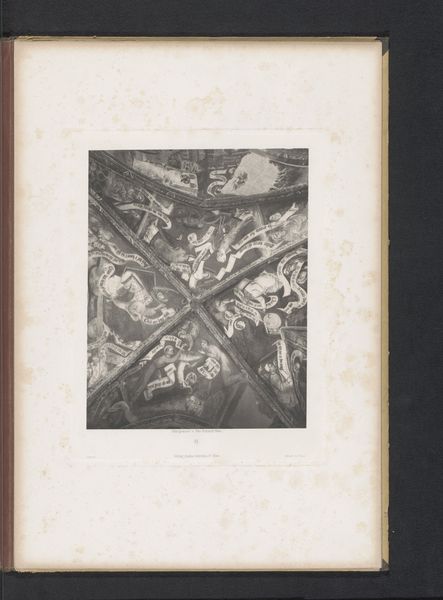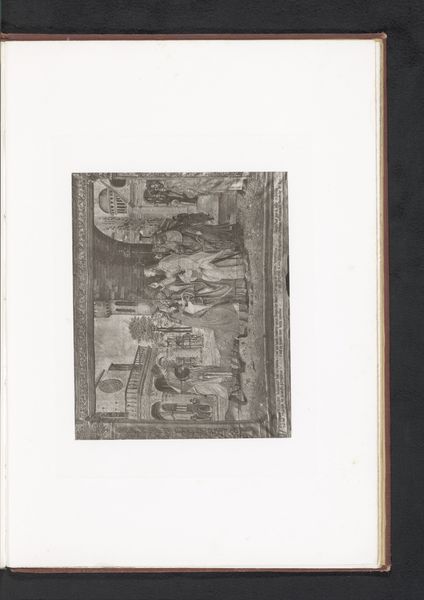
Kazuifel uit een kerk in Lier, opgesteld op een tentoonstelling over religieuze objecten uit de middeleeuwen en renaissance in 1864 in Mechelen before 1866
0:00
0:00
print, engraving
#
medieval
# print
#
figuration
#
line
#
engraving
Dimensions: height 201 mm, width 257 mm
Copyright: Rijks Museum: Open Domain
Editor: Here we have an engraving created before 1866 by Joseph Maes, titled "Chasuble from a church in Lier, exhibited at an exhibition on religious objects from the Middle Ages and Renaissance in 1864 in Mechelen." It feels like we're looking at a snapshot of a moment of reverence. I wonder, what can you tell us about this work's broader significance? Curator: Well, this print depicts a medieval chasuble, but more importantly, it documents its presentation in a specific 19th-century exhibition. This reveals the rising interest in medieval art and artifacts during that period. Think about it – why were religious objects suddenly deemed worthy of display? What did they represent to a 19th-century audience, particularly in a place like Mechelen? Editor: I see your point. Was this fascination purely aesthetic, or was there a deeper cultural or political motive? Curator: Precisely. The display of religious objects was often intertwined with constructing national identities and revisiting notions of faith in a rapidly changing world. These objects, especially from the Middle Ages, served as visual reminders of a perceived "golden age," often glossing over social and political complexities. How does this affect our understanding when exhibited out of its liturgical use? Editor: It suggests that objects are removed from the church setting and reframed within secular settings as something worthy of cultural importance and viewing, detaching from pure religiosity. That totally shifts the focus from spiritual purpose to cultural appreciation and study! It also prompts reflection on how museums and exhibitions shape our perception and relationship with religious history. Curator: Exactly! By acknowledging the historical context of the object's display, we move beyond a simplistic appreciation of its artistic merit. Thanks to prints like this, it raises questions about how museums and exhibitions construct narratives about the past, including, specifically, the politicization of religious imagery. Editor: I had never considered the implications of early exhibitions like that before. It's intriguing to understand the politics intertwined with medieval objects from so long ago!
Comments
No comments
Be the first to comment and join the conversation on the ultimate creative platform.
